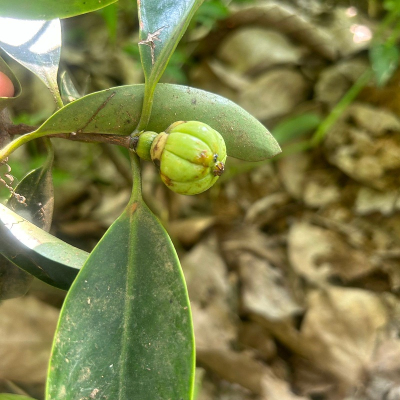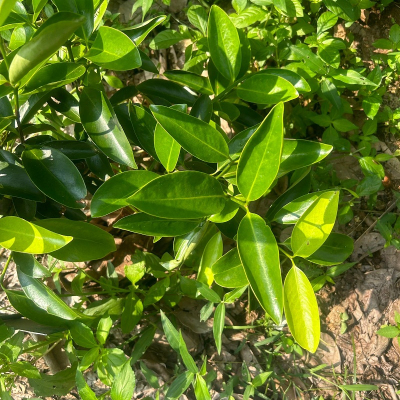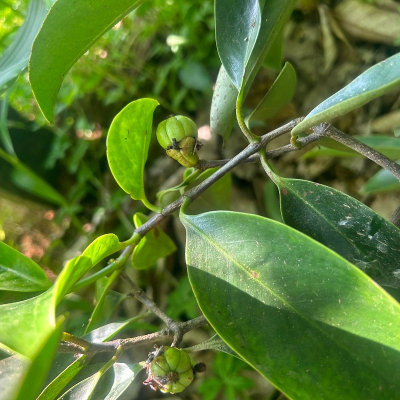Garcinia gummi-gutta (Linn.) Roxbs.
Synonyms : G. cambogia
Family : Clusiaceae
Group : Anti-arthritic/anti-rheumatic/anti-inflammatory
Parts Used : Leaf , Dried fruits
Vernacular Names :-
| English | : | Gamboge |
| Malayalam | : | Kudampuli, Kotappuli |
| Hindi | : | Bilatti- amli |
| Sanskrit | : | Vrksamlah |
| Gujarathi | : | Kokan |
| Kannada | : | Punarpuli |
| Tamil | : | Kodukkappuli |
| Telungu | : | Vrksamla |
Distribution and Habitat: Throughout the Western Ghats in evergreen and lower shola forest.
Botany: A moderate-sized handsome evergreen tree with a rounded crown and horizontal or drooping branches.
- Leaves: Simple, opposite, dark green, elliptic-ovate, shining.
- Flowers: tetramerous, polygamous in fascicles.
- Fruits: Ovoid, yellow or red when ripe with 6-8 groves up to about the middle. Seeds 6-8, arillate.
Properties: Astringent, thermogenic, antiobesic, anti-inflammatory
Chemical constituents: -hydroxy citric acid (HCA), Camboginol, xanthones, biflavonoids etc
Uses: It is used in ulcers, inflammations, constipation, flatulent colic, hyperdipsia and haemorrhoids.
Formulations: Astanga-lavan
Agro technology:
Soil and climatic conditions: Loamy acidic soils with high organic matter is preferred.
Propagation: Seed , grafting
Manures and Fertilizers: 50 kg organic manure/plant/year. Apply N:P2 O5 :K2 O mixture at the rate of 20:18:50 g/plant during the first year. Double the dose in the second year and gradually increase it to 500:250:1000 g / plant / year at the 15th year.





